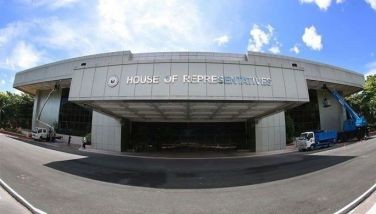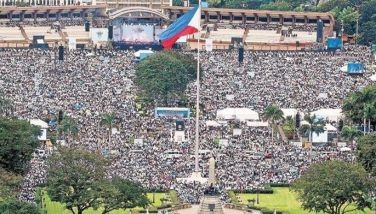Central Visayas remains Philippine’s 4th largest economy
CEBU, Philippines — The Philippine Statistics Authority-7 reported that Central Visayas remains the fourth largest economy in the country.
Speaking on the 2022 Economic Performance, PSA-7 regional director Ariel Florendo said that Central Visayas has produced P1.29 trillion worth of goods and services in 2022 as the region has a gross regional domestic product with a growth rate of 7.6 percent from 5.4 percent in 2021.
Central Visayas produced P1.29 trillion worth of goods and services in 2022.
The region’s per capita gross regional domestic product (GRDP) increased to P158,010 in 2022 from P148, 481 posted in 2021. Meanwhile, the per capita household final consumption expenditure (HFCE) was recorded at P113, 889 in 2022, higher by P7,380 or 6.9 percent than the P106, 509 recorded per capita HFCE in 2021. The real capita HFCE in the region was 12.8 percent lower than the national level of P130,590.
Furthermore, the government's final consumption expenditure (GFCE) was posted a growth rate of 2.6 percent in 2022 from a growth of 6.5 in 2021, the region's share to the total expenditure in 2022 was 9.5 percent valued at P123 billion. While the gross capital formation (GCF) posted a growth of 7.8 percent in 2022 from a growth of 6.5 in 2021, the total expenditure in the region was 9.5 percent and valued at P258 billion.
In addition, the main contributors of 2022 growth are the wholesale and retail trade; repair of motor vehicles and motorcycles with 1.7 percentage points, 1.0 percentage point for transportation and storage, and 0.9 percentage points for accommodation and food services activities. Hence, among the 16 industries, the industries with fastest growth are the accommodation and food services activities with (47.2%), other services with (38.2%), and transportation and storage with (29.1%).
Yet, the industry grew by 6.0 percent in 2022 compared to the growth of 3.8 in 2021. This was mainly attributed to the increase in construction and manufacturing. However the agriculture forestry and fishing (AFF) had 4.7 percent from 5.3 percent growth registered in 2021.
The services accounted for the highest share of 69.4 percent in the region’s total GRDP in 2022, followed by the industry with 24.1 percent, and AFF with 6.5 percent. In 2022, services grew by 9.6 percent from a growth of 6.o percent in 2021.
In 2022, all the major expenditure items was posted of positive growths, exports of goods and services was the fastest growth with 14.7 percent to the rest of the world and share with 36.9 percent total to expenditure in the region valued at P474 billion of Central Visayas in 2022, a rebound from decline of 1.5 percent in 2021.And was followed by imports of goods and services from the rest of the world with 13.2 percent growth from a growth of 15.3 percent in 2021. The HFCE was posted to be the highest contribution to the growth of the regional economy, contributing 5.8 percentage points.
Maria Sostheleen Padilla, OIC-assistant regional director of the National Economic Development Authority-7, said that it is encouraging to see the positive figure of the region’s economic performance.
“The region is well on its way to economic recovery and maybe we can accomplish our goal in the next six years to be a middle income class country,” she said.
Padilla said that this economic performance is also timely as they are gearing up on the implementation of the Central Visayas Regional Development Plan that was approved by the Central Visayas Regional Development Council in March and this plan covers the period 2023 to 2028.
“The current 2022 growth rate of the region’s economy is well within the target of the Central Visayas Regional Development Plan of 6.5 percent to 8.5 percent annual growth rate,” Padilla said.
However, per industry, the agriculture, forestry and fishing posted a -0.4 percent contribution to growth rate while the accommodation and food service activities, transportation and storage and construction posted a contribution rate of 0.9 percent, 1.0 percent and 0.8 percent, respectively.
Padilla said that typhoon Odette in December 2021 had damaged many plantations in the region but what really contributed to the slow recovery of the agriculture sector was also the damage of the farm infrastructure and dams and also gears and equipment of the farmers and fisherfolk.
“Then this is aggravated by the high cost of inputs because of the supply gridlocks happening globally. So, the high cost of inputs of fertilizers, insecticide and even petroleum products aggravated the situation for the agriculture, forestry and fishing sectors,” Padilla said.
But the target of the region, she said, is for the agricultural sector to grow by 3.5 percent to 5 percent every year from 2023 to 2028.
“This is quite challenging because the 2022 growth is at -4.7 percent but hopefully with our plans and if we are able to realize our plans for the sector, we get to achieving this target of 3.5% to 5% growth in agriculture, forestry and fishing sector for 2023 to 2028,” Padilla said.
She cited that aside from some of these plans of capital investments on these three sectors, they also hope to promote and advocate for the passage of some policies that would help the sector to strengthen further these agri-business activities while protecting the local agriculture, foresty and fishing sector from unfair competition.
“We hope to strengthen the welfare and protection for our farmers and fisherfolks not only for their production but for themselves as well,” she added.
Padilla likewise highlights the very huge growth of the accommodation and food services which is at 47.2 percent and the growth of the wholesale and trade which is at 7.7 percent.
“This clearly shows us that the tourism of both domestic and foreign activities has slowly recovered because the wholesale and trade figures and accommodation and food services are related to tourism activities,” Padilla said.
Padilla further said that the services sector which is the region’s economic force comprising 70 percent of the regional economy, the 9.6 percent growth is also within the target of the regional development plan. — Esraelita P. Inosario, BiPSu Intern, GMR (FREEMAN)
- Latest


























